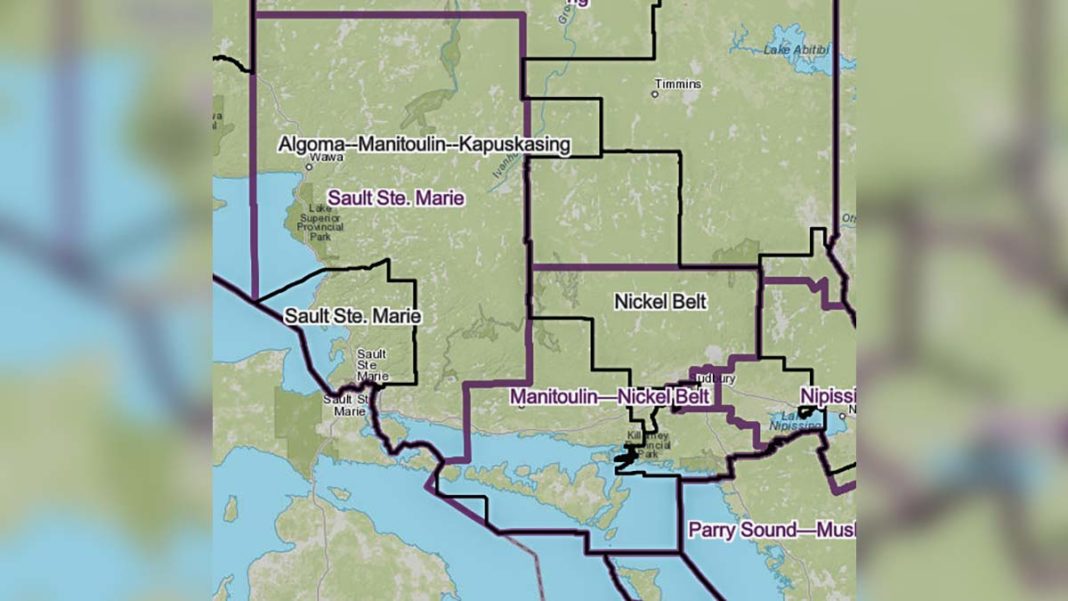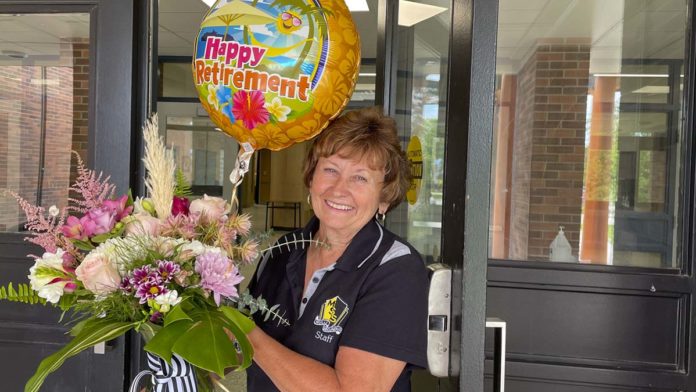EDITOR’S NOTE: This story has been edited to reflect the fact that the NEMI councillor in attendance at the Slovakian Embassy luncheon in Ottawa was there at the invitation of the ambassador in his capacity as a reporter, not as a member of council.
OTTAWA—Every 10 years in Canada, following the national census, the Federal Electoral Districts Redistribution Commission begins the process of re-defining the boundaries of the nation’s electoral districts (ridings). That process officially began in February and the proposed changes hit public awareness with the publication on August 19 of a map outlining the proposed new riding boundaries.
The latest proposed electoral map will see Northern Ontario lose one riding, with Algoma-Manitoulin-Kapuskasing being subsumed into three other ridings. Manitoulin would become part of a new Manitoulin-Nickel Belt electoral district.
That map will form the basis for consideration at public hearings to take place this fall. The Federal Electoral Districts Boundaries Commission for Ontario map was developed through “an independent and non-partisan process.”
“In exercising its mandate under the Electoral Boundaries Readjustment Act and given the allocation of one additional district to Ontario, the commission found it necessary to propose many new electoral boundaries to correct wide variations in voter equality that have emerged across the province over the past decade due to population change” said the Honourable Justice Lynne C. Leitch, chair of the three-member commission in a release accompanying the map.
The other three members of the commission are Dr. Karen Bird and Dr. Peter John Loewen. Together, the trio is responsible for readjusting the province’s federal electoral boundaries.
The deadline for written submissions to the commission is September 25 and public hearings are slated to begin on September 26 through to October 29. Sometime between then and the end of December the commission will issue a report. The process then goes to objections from MPs (beginning in November 2022 and continuing until May 2023). The commission then considers the objections between January and June 2023, culminating in a representation order setting the boundaries in stone being issued in September of 2023.
Current AMK MP Carol Hughes brought the proposed changes to the attention of a number of Northern mayors (and the Expositor) during a recent luncheon at the Slovak embassy in Ottawa. The luncheon took place on Wednesday, August 17 following the Association of Municipalities of Ontario conference. The municipal politicians were invited to the embassy by Slovakian Ambassador Vít Koziak in response to their hospitality during his recent visit to Northern Ontario.
“All the MPs in the North are on the same page on this,” said AMK MP Carol Hughes. “None of us wants to see the North lose a riding. We are co-ordinating efforts in response to the commission.” The issue is one that is crossing party lines.
Ms. Hughes notes that the matter is anything but esoteric. “This could well impact funding for businesses and municipalities,” she said, “the Canada Summer Jobs program is a case in point. There is over $1 million that we will lose in that program, meaning that employers will have less access.”
Complicating things further, larger centres have larger staffs and better ability to craft funding proposals than smaller communities. “They are not likely to be increasing the funds in those programs,” she pointed out. “That leads to another concern, access to services.”
The new ridings are not likely to see any significant increases to MP budgets. “I have two offices in the riding right now,” she said. “If this riding disappears, those offices will likely be closed.”
Former Liberal MP Brent St. Denis fought vigorously for the current boundaries of AMK over two decades ago and declared himself dismayed to see the proposed changes currently being put forward—especially the loss of a Northern riding and the rural voices that will be diminished in Canada’s Parliament.
“From the perspective of small-c conservative people living in the cities, the ideal is one person—one vote,” he said, pointing out that a slavish adherence to that principle results in two things: rural voices and concerns being drowned out by urban volume and/or the creation of rural ridings so large they become utterly unwieldy for their representatives to service.
“When Canada was first established, pretty much everyone lived in rural communities,” he said. “We all lived in, at most, small villages.”
The process of nation-building, Mr. St. Denis noted, included the establishment of those small villages along the boundaries of the new nation to act as buffers and lay claim to the land. “Unfortunately, that land came at the expense of Indigenous nations,” he said. “But the process of nation-building depended on rural communities and interests. This country started with rural communities but, over time, a number of those villages grew to absorb the smaller communities to grow into cities.” The result is that, along the way, rural voices started to become fainter and fainter in the nation’s halls of power.
If that trend continues unabated, rural voices may well become muted altogether. “That would be an unfortunate loss for our nation,” suggested Mr. St. Denis. He noted that there had been a commitment following the last redistribution that the North would not fall below its current number of seats.
Ms. Hughes noted that Brampton will be going from five seats to six and that London will see an increase from three seats to four. “Taking a seat away from Northern Ontario to give to the south is simply unacceptable,” she said. “Areas in the south have better access to transit, better access to services. The late Jack Layton used to say to me ‘I can ride my bicycle from one side of my riding to another in an hour.’”
Riding around the circumference of AMK takes around 18 hours by car.
Adding to the issue even further, the public meetings for input into the commission are slated to take place in Timmins, Kenora and Sioux Lookout—not even Sudbury made the first cut. “There will be a virtual meeting as well, with Northern Ontario lumped in with Eastern Ontario and Ottawa. Not only that, the meetings are scheduled for 6:30 pm and basically in the middle of municipal elections.”
The proposed new boundaries reflect Ontario’s increase in population from 12,851,821 in 2011 to 14,223,942, as captured in the 2021 Census and takes into consideration communities of interest or identity and historic and geographic factors. The proposal can be found at redistribution2022.ca. It will be published in the Canada Gazette on September 3, 2022.
As of yet, the proposals are not set in stone. The previous redistribution plan was adjusted dramatically in response to public input.





